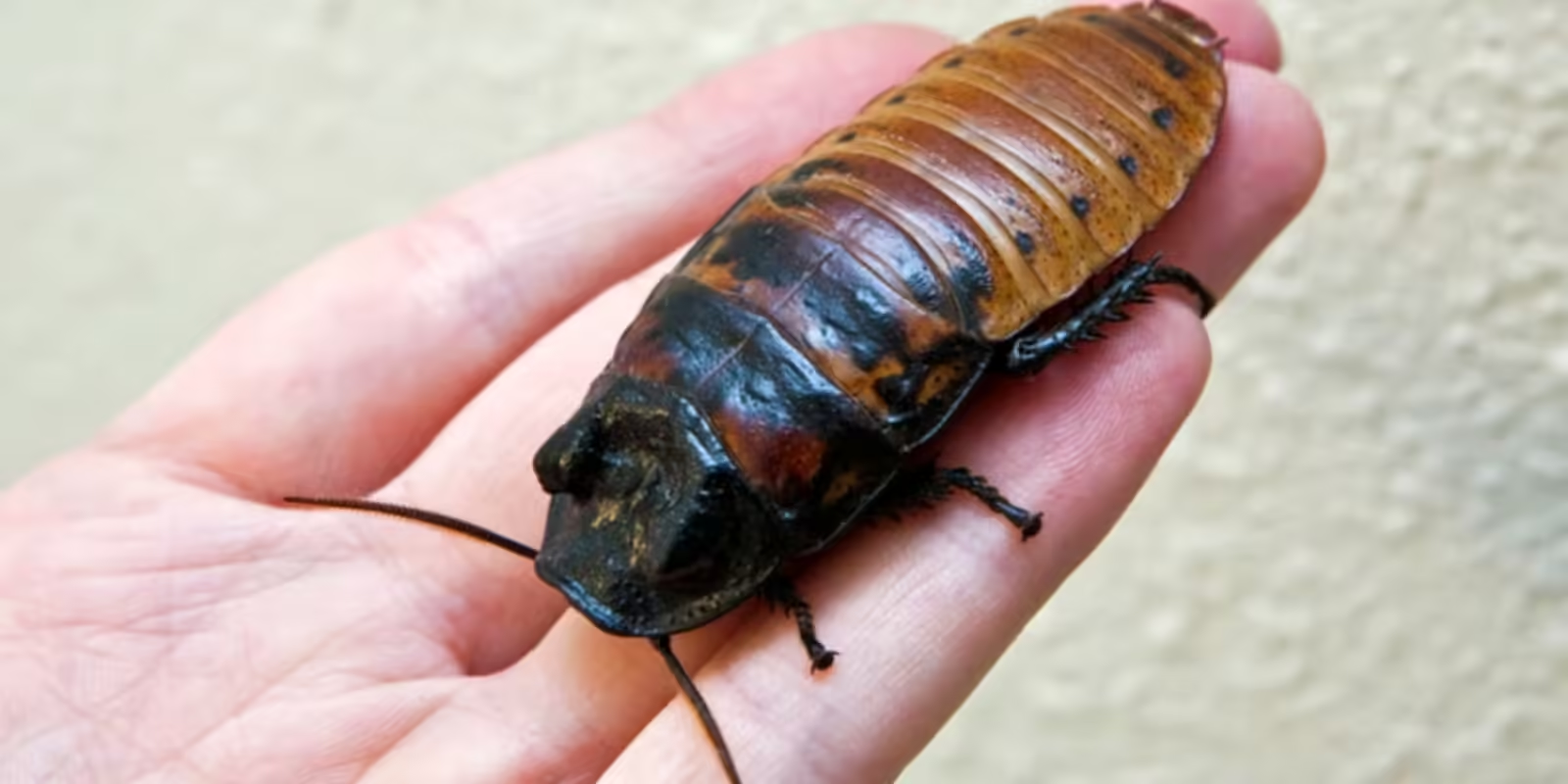When it comes to the scientific name of the largest cockroach, it’s Megaloblatta longipennis. This fascinating species stands out due to its enormous size and wingspan, making it the largest cockroach in the world. Known for its impressive wings that can span up to 8 inches, Megaloblatta longipennis is a true giant in the insect world. Found mostly in South America, this species of cockroach is not only large in size but also unique in its behavior and habitat preferences.
The scientific name of the largest cockroach, Megaloblatta longipennis, refers to a species that belongs to the Ectobiidae family, native to the tropical regions of Colombia, Ecuador, and Peru. While these cockroaches may sound intimidating due to their size, they mostly live in remote, forested areas, far from human settlements. Understanding this cockroach’s scientific name and its characteristics helps to appreciate the incredible diversity of insect life and the role each species plays in the ecosystem.
What is the Scientific Name of the Largest Cockroach?
The scientific name of the largest cockroach is Megaloblatta longipennis. This cockroach is not your average insect. It’s known for being the largest species of cockroach in the world, with its wingspan reaching up to 8 inches. Megaloblatta longipennis is a giant compared to other cockroaches, which are usually much smaller. This unique species has earned its place in the spotlight for its incredible size and fascinating traits.
Living in tropical areas, Megaloblatta longipennis is found mostly in South America, especially in countries like Colombia, Ecuador, and Peru. It belongs to the Ectobiidae family and has earned attention because of its remarkable wings and large body. While they may look scary to some, these cockroaches are not harmful to humans and live in remote forest areas.
Megaloblatta Longipennis: The Giant of the Cockroach World
Megaloblatta longipennis is the world’s largest cockroach, and it stands out not only for its size but also for its wings. With a length of up to 3.8 inches and a wingspan of about 8 inches, this cockroach is truly a giant. These insects can glide through the air, making them even more impressive. Unlike other cockroaches that tend to hide in dark corners, Megaloblatta longipennis is often found in the forests of South America, where it thrives in its natural environment.
One of the fascinating things about this cockroach is its ability to fly short distances. This skill helps them escape from predators and move across their large habitats. Even though they can fly, Megaloblatta longipennis prefers to stay on the ground, where it finds food and shelter.

Where Can You Find Megaloblatta Longipennis?
Megaloblatta longipennis is mostly found in tropical regions of South America. It lives in places like Colombia, Ecuador, and Peru. These cockroaches prefer warm, humid climates, and you can find them in rainforests and dense forests. The unique habitat of these cockroaches helps them grow to their large size, as they are protected from many predators in these areas.
While these cockroaches are not typically found in urban areas, they may occasionally be spotted near human settlements. However, they tend to stay in areas where they can find plenty of food, such as decaying plants and organic matter. This makes them important to the ecosystem, as they help break down materials in the forest floor.
Key Points:
- Found in South American countries like Colombia, Ecuador, and Peru.
- Thrive in humid, tropical rainforests and dense forest environments.
- Rarely seen in urban areas, staying close to natural habitats.
Why is Megaloblatta Longipennis So Special?
Megaloblatta longipennis is special because it is the largest cockroach in the world. What makes it stand out is not just its size, but also its ability to glide through the air with its large wings. This cockroach can live up to a year, and during that time, it can grow to a large size, with some individuals reaching up to 9.7 cm in length. Their wings are strong enough to help them travel short distances, which is a unique feature compared to other cockroaches.
Another interesting feature of Megaloblatta longipennis is its defense mechanism. These cockroaches are known to produce sounds by rubbing their body parts together, a behavior called stridulation. This sound can help scare off predators, making it harder for them to be caught. These defensive traits help ensure their survival in the wild.
How Does Megaloblatta Longipennis Defend Itself?
Megaloblatta longipennis has some impressive ways to protect itself from predators. One way it defends itself is through a behavior known as stridulation. This involves rubbing its body parts together to create a sound that can startle or scare off other animals. Stridulation is a common defense mechanism in many insects, and it is especially effective for this large cockroach.
In addition to stridulation, Megaloblatta longipennis is fast and agile. It can quickly fly or crawl away when it senses danger. Its large wings help it escape predators, making it more difficult for other animals to catch it. The combination of these defense strategies allows Megaloblatta longipennis to thrive in its environment despite being so large.
Key Defense Mechanisms:
- Stridulation: A sound created by rubbing body parts together to scare predators.
- Flight: The ability to glide short distances to escape danger.
- Speed and Agility: Fast movement on the ground to avoid threats.

Fun Facts About Megaloblatta Longipennis
Megaloblatta longipennis isn’t just a giant; it’s also fascinating in many other ways. Did you know that it has a wingspan of up to 8 inches? This makes it one of the most impressive insects in the world. Despite its size, it mostly stays hidden in forests, away from human attention. It’s also one of the few cockroaches that can glide short distances, which is unusual for most cockroach species.
Another fun fact is that these cockroaches live for a long time compared to other cockroaches. Megaloblatta longipennis can live up to a year, allowing them plenty of time to grow and thrive in their natural environment. They are also known for their ability to feed on decaying organic matter, helping maintain the balance in the ecosystem.
Fun Facts:
- Can have a wingspan of 8 inches.
- Known for gliding short distances.
- Lives for up to a year, longer than many other cockroaches.
By learning about Megaloblatta longipennis, we gain a deeper appreciation for the diversity of the insect world. This giant cockroach is just one example of how insects can adapt to their environments in surprising ways. Whether it’s their defense mechanisms or their impressive size, these creatures have a lot to teach us about survival in the wild.
Conclusion
the scientific name of the largest cockroach, Megaloblatta longipennis, is an amazing creature. It is the biggest cockroach in the world, with a length of up to 3.8 inches and a wingspan of 8 inches. This giant cockroach can glide short distances and is mostly found in South American rainforests. While it might sound scary, it doesn’t harm humans and plays an important role in nature by helping to break down organic materials.
Learning about Megaloblatta longipennis reminds us that even insects, which might seem small and unimportant, are very interesting and important to the world around us. Its unique features and survival skills show just how special nature can be. Even if you find it a bit creepy, this cockroach is truly a fascinating part of the insect world!
FAQs
Q: Where can you find Megaloblatta longipennis?
A: It is mostly found in the tropical rainforests of South America, including Colombia, Ecuador, and Peru.
Q: Does the largest cockroach fly?
A: Yes, Megaloblatta longipennis has large wings and can glide short distances.
Q: How does the largest cockroach protect itself?
A: It uses stridulation, a sound made by rubbing body parts together, to scare away predators.
Q: Can the largest cockroach fly?
A: Yes, Megaloblatta longipennis has wings and is capable of gliding over short distances.
Q: How does the largest cockroach defend itself?
A:Megaloblatta longipennis uses stridulation, which is a sound made by rubbing body parts together to warn off predators.






















Leave a Reply